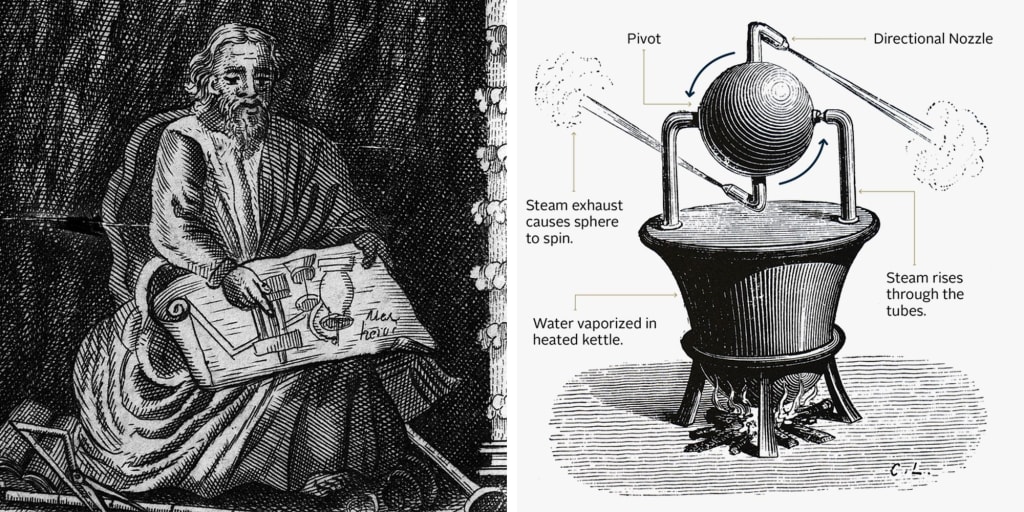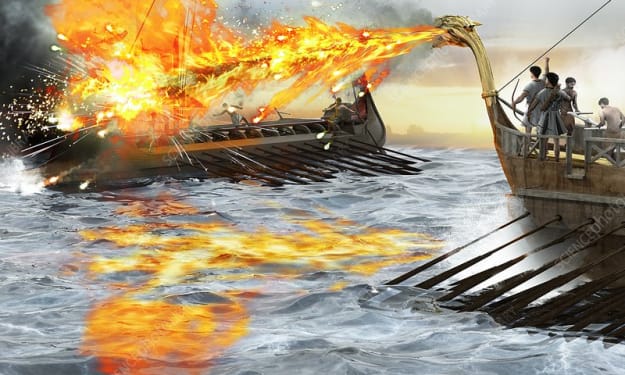
The Aeolipile, also known as Hero's Engine, stands as one of the earliest examples of steam power, illustrating the advanced engineering prowess of ancient civilizations. This remarkable device, attributed to Hero of Alexandria in the 1st century CE, showcases a fundamental understanding of steam propulsion long before the Industrial Revolution brought steam engines to prominence.
Hero of Alexandria, a Greek engineer and mathematician, described the Aeolipile in his work "Pneumatica." The device consists of a spherical vessel mounted on a pair of pivoted arms. The sphere has one or more bent tubes projecting from it, and when water inside the sphere is heated, steam is produced. This steam escapes through the tubes, creating thrust that causes the sphere to spin. The simplicity of the Aeolipile's design belies its sophisticated grasp of the principles of reaction propulsion.
Hero's invention was primarily a demonstration of the power of steam, rather than a practical engine for performing work. However, it vividly illustrated the potential of steam as a source of mechanical power, a concept that would eventually revolutionize technology and industry many centuries later. The Aeolipile's operation relies on the same fundamental principles that govern modern jet propulsion, making it a direct ancestor of contemporary engines.
The historical context of the Aeolipile is fascinating. Created during a period of significant scientific and technological exploration in the Hellenistic world, Hero's Engine exemplifies the inventive spirit of the time. Hero of Alexandria himself was a prolific inventor, and his works include descriptions of numerous mechanical devices, automata, and experiments that pushed the boundaries of known science and engineering.
While the Aeolipile did not directly lead to the development of practical steam engines in its own time, its significance lies in its role as a conceptual breakthrough. It demonstrated that steam could be harnessed to produce motion, a principle that would be crucial to later technological advancements. The device also highlights the experimental nature of ancient science, where practical applications often took a back seat to the exploration of fundamental principles.
In modern times, the Aeolipile is celebrated as a symbol of early innovation and the enduring curiosity of the human mind. Replicas of Hero's Engine can be found in museums and educational exhibits around the world, serving as a tangible connection to the ingenuity of the ancient world. These replicas not only educate people about the history of technology but also inspire new generations to explore the possibilities of science and engineering.
Hero's Aeolipile also underscores the interconnectedness of different cultures and periods in the history of science. The knowledge and concepts developed by Hero and his contemporaries in the ancient world laid the groundwork for future discoveries and inventions. The rediscovery and study of ancient texts during the Renaissance helped to revive interest in steam power and other scientific principles, bridging the gap between antiquity and modernity.
In conclusion, the Aeolipile, or Hero's Engine, stands as a remarkable testament to the inventive spirit of ancient engineers and their contributions to the understanding of steam power. While it may not have been a practical engine in its own time, its conceptual importance cannot be overstated. The Aeolipile symbolizes the curiosity and creativity that drive scientific progress, reminding us that the seeds of modern technology were sown long ago by brilliant minds like Hero of Alexandria. Its legacy continues to inspire and educate, highlighting the timeless nature of human ingenuity and the enduring quest for knowledge. As we marvel at its simplicity and foresight, we recognize how Hero's exploration of steam power laid the foundation for future technological revolutions, underscoring the profound impact of ancient innovations on our modern world.
About the Creator
Marveline Merab
“History never repeats itself. Man always does.”
― Voltaire
Enjoyed the story? Support the Creator.
Subscribe for free to receive all their stories in your feed. You could also pledge your support or give them a one-off tip, letting them know you appreciate their work.






Comments (1)
great job👍